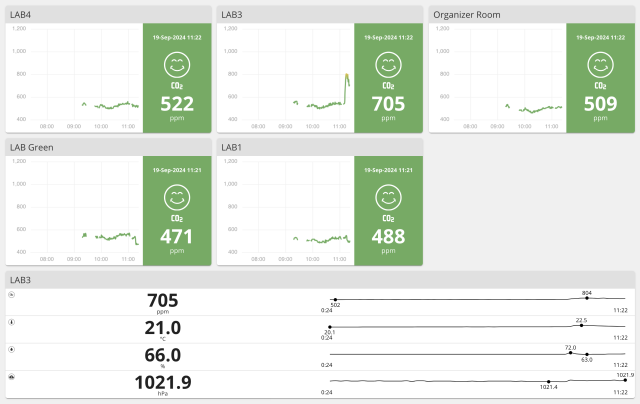Sometimes being a #HealthAndSafety / #IAQ advocate can feel a little lonely, but I'm an eternal optimistic – and not without reason.
When I bring air quality monitors to events, and make the data easy to access, people respond. People here at #MatrixConf have been monitoring the air quality, adjusting ventilation, and noting when things are concerning. I never even had to ask!
The trick is making the invisible visible, and giving people the tools to make informed decisions.
... and in case you're curious, here are the live data feeds for the event!
LAB Green: aranet.cloud/public/b7v923hk
LAB1: aranet.cloud/public/r52ec3cg
LAB3: aranet.cloud/public/wnh5g37q
LAB4: aranet.cloud/public/v8m3c3w3
Organizer Room: aranet.cloud/public/dx9vb3r9



